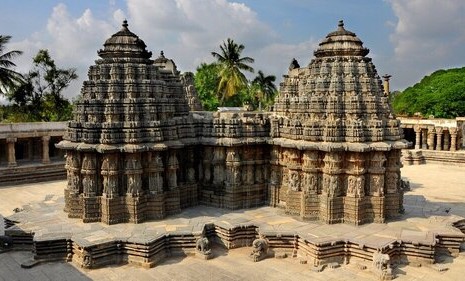
United Nations Educational, Scientific and Cultural Organisation (UNESCO) has added ‘Santiniketan’ and ‘Hoysala Temples’ in its world heritage sites list as 41st and 42nd world heritage sites of India respectively.
As we know UNESCO has three categories of world heritage sites: Natural, Cultural and mixed. Both the sites have been added in the cultural category. India now has 34 cultural, 7 natural and 1 mixed world heritage site.
However, India is still on the 6th position in the World Heritage Site list.

ALSO READ- Yashobhoomi
41st World Heritage Site (WHS) ‘Santiniketan’-

Santiniketan is a town located in Birbhum district of West Bengal. It is deeply connected to the contributions and ideologies of Rabindranath Tagore, a globally renowned poet, artist, musician, and philosopher, who was honoured with the Nobel Prize in Literature in 1913. The location was founded as an ashram and named in 1863 by Rabindranath Tagore’s father, Debendranath Tagore.
In 1901, Rabindranath Tagore began transforming Santiniketan into a special place. It became a school where students lived and learned, following an old Indian way of teaching known as ‘gurukul’. Tagore’s dream was to bring people from all over the world together, and he called this idea ‘Visva Bharati’.
Santiniketan’s buildings differed from the typical British and European styles of the time. Instead, they were designed to reflect a modernity that embraced the rich traditions of Asia. This meant drawing inspiration from ancient, medieval, and folk traditions found throughout the region.
42nd World Heritage Site (WHS) ‘Hoysala Temples’-

UNESCO has added three Hoysala Temples of Karnataka as its 42nd WHS. The three temples are:
- Hoysaleshwara Temple at Halebidu
- Chennakeshava Temple at Belur
- Keshava Temple at Somanthapura
Hoysala temples are examples of ‘Dravidian morphology’. They were built during the 12th and 13th centuries by the Hoysalas. Hoysala dynasty ruled over much of Southern India from the 11th to 14th centuries. The Hoysalas built many impressive temples and other religious structures during their reign. The Sacred Ensembles of the Hoysala are incredible examples of Hoysala architecture. They show how rich and powerful the dynasty was.
What Are the Benefits of Being Listed on the World Heritage List?
- The site gets an international recognition.
- It gets legal protection under the World Heritage Convention.
- It gets tourism boost-up and revenue benefits also.
- Also, It gets access to funding from the World Heritage Fund.

